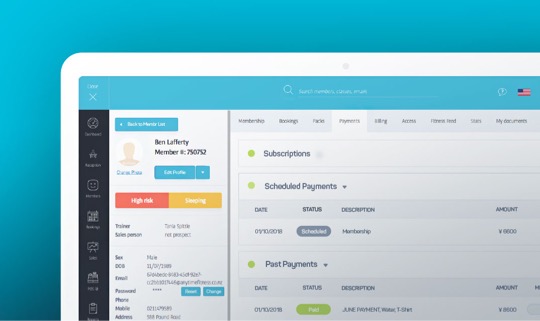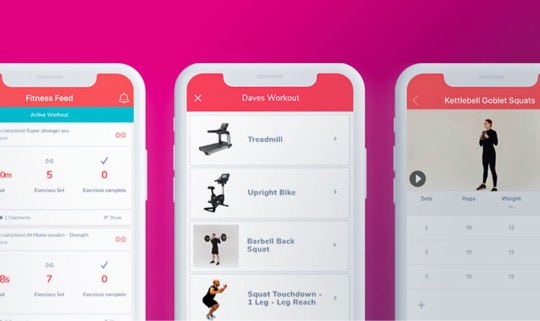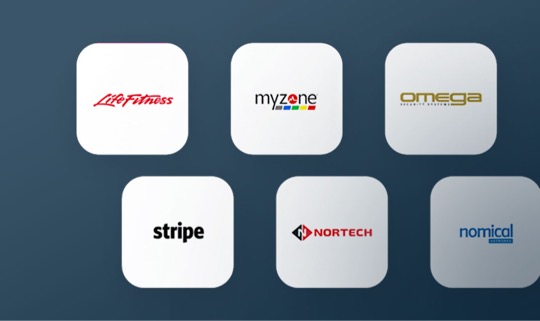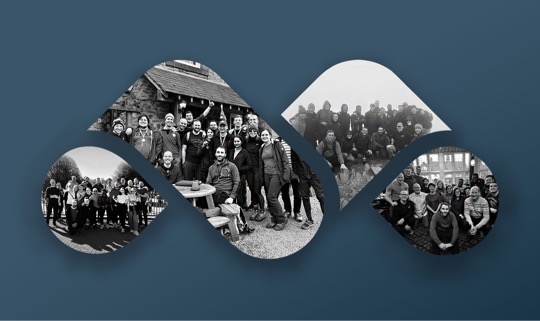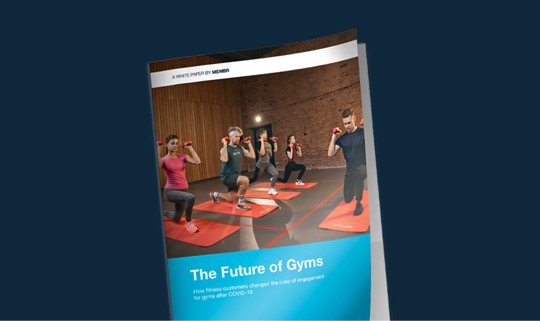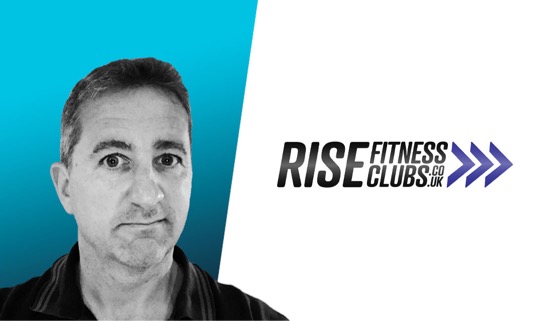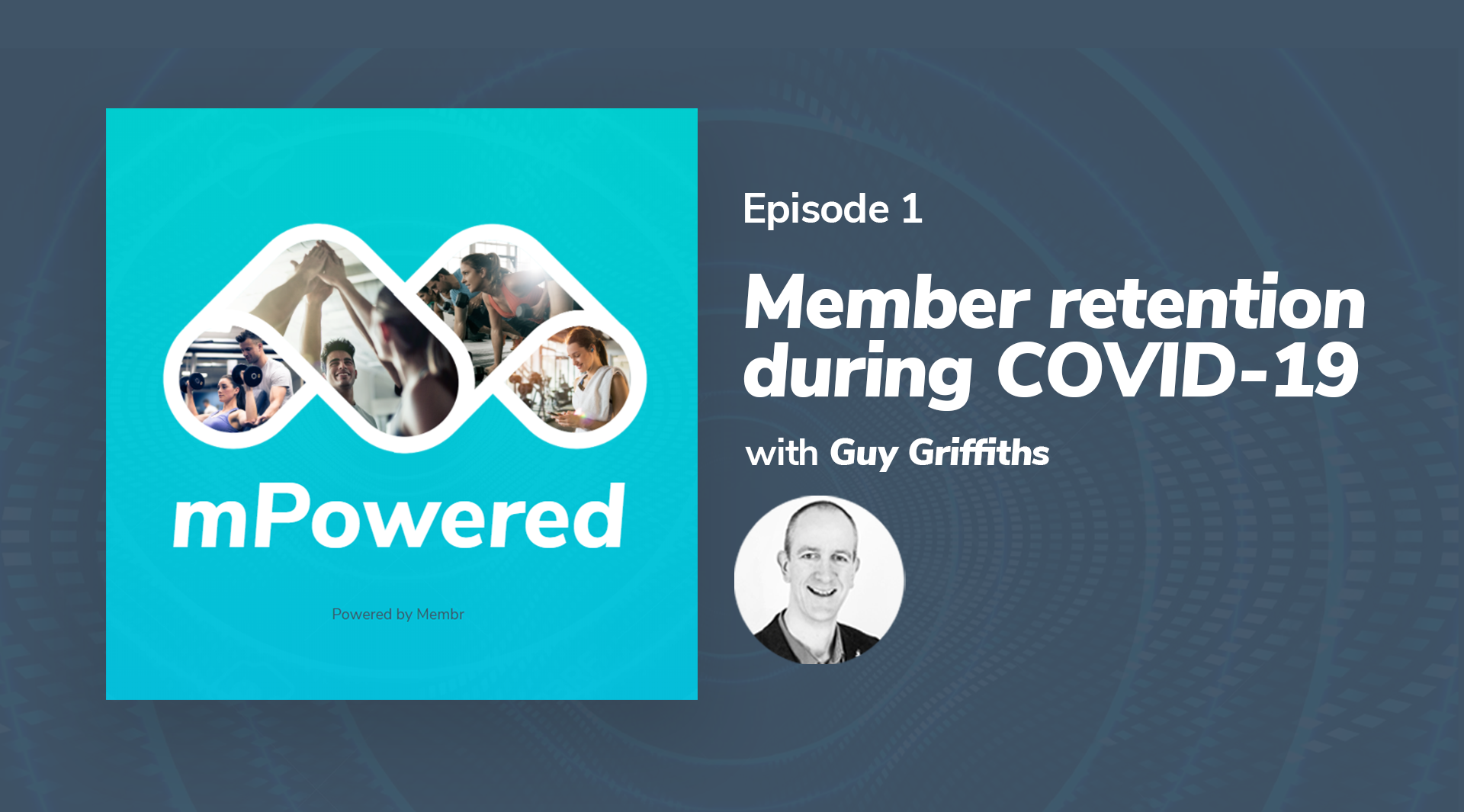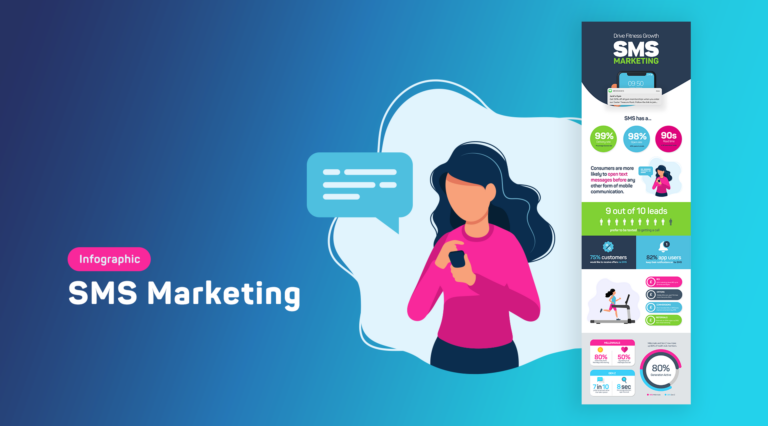Guy Griffiths 0:01
Obviously, it’s a tough year. It’s tough for lots of businesses, not not just the fitness industry, but we have been hit hard. I think there’s a number of things that, you know, exercisers want and that a number of things are bringing members back to clubs. I think one of the headlines is choice. So the choice of coming back when they are ready, but also the choice, you know, offering choice is really important to say: if you can come back and if you want to come back and you want to do a class or you just want to do a workout, then you can do that. You can choose whether you’re going to do that in the club, or you can choose whether you’re going to do that online.
Craig McNeill 0:42
Welcome to mPowered. I’m Craig McNeill, and I’ll be your host. What does the future of the traditional gym look like? Can gym owners learn about brand loyalty from social media? How do you keep exercisers engaged during a global pandemic? We started mPowered with a mission to answer those questions and more. Join us for conversations with global health and tech experts around the changes and challenges within the fitness industry. For groundbreaking leadership ideas, and the latest fit tech innovations.
Craig McNeill 1:19
Welcome, Guy, to mPowered. How are you?
Guy Griffiths 1:23
Yeah, really good. Thank you, and you?
Craig McNeill 1:25
Yeah, all good. Thank you very much. It’s great to speak to you. We’ve worked together alongside each other a few years back now. And ever since I’ve been watching what you’ve been doing with clubs, coaching, kind of how to support with retention, specifically. And GG fit is obviously very popular in terms of the UK landscape of gyms. So a little bit more about about Guy and GG Fit, we understand you’re a coach to independent gyms. And I have read your ‘Stick Around’ book – it’s a really, really interesting read, and some really good points and really clear objective things to go away and do, which I really took away from, from your book, Guy. And, and what I can see as well as that you’re very active with your blog, where you’re sending out newsletters on a monthly basis, if not more regularly. And it’s really nice to see that that you’re sharing best practice, you’re sharing knowledge. And you’re not afraid of sharing that information as well, which is really good to see.
Guy Griffiths 2:35
Yeah, that’s what I have, in terms of collaborating and sharing is for me, it’s what makes the world go and ultimately, I want people to be fitter and healthier. That’s why I’ve decided – it took me a few years to come to that raison d’etre – but yeah, I just want to help clubs to get their members to stick around longer. Then, if some of those types want to go into more depth with me, then that’s, that’s great. But if, if I can put stuff out there that helps people to get fitter and healthier, and yes, that’s why I’m here. Yeah.
Craig McNeill 3:07
Absolutely. So today, we’re going to talk about member retention. And we are going to talk about how member retention has slightly changed during COVID-19. And what clubs are doing, what clubs are finding and what your kind of analytics of, of that period, has come around. So before we kind of do that, just want to know a little bit more about Guy if that’s okay. So nothing too embarrassing, I hope!, and talking about ourselves. Just give a little bit background of Guy. Tell us one funny, kind of past experience that you’ve had. And then one interesting fact about yourself Guy?
Guy Griffiths 3:47
Okay, errm, a funny thing about myself? Well, that’s a good one, on the spot. I think it’s something that was, you talked about my kind of blog and LinkedIn profile? I scratched it off my LinkedIn profile a while ago, but I used to, I used to deliver pizzas around in and around Northampton when I was a student kind of as I left school, and in the university holidays I worked for ‘It’s a lovely pizza’, as well. And I’ll be honest, one of the best jobs I’ve ever had, I really enjoyed driving around, not on a moped in a van delivering pizzas all around Northampton. I got paid 10 pounds a night. But I always looked at it, in that I wasn’t going out and and spending probably 10 pounds a night so I was always felt I was effectively 20 quid up. And normally a pizza as well. So yeah, maybe that’s what I’m trying to undo now, all the bad that I did, then!
Craig McNeill 4:43
Maybe that’s it.
Guy Griffiths 4:45
So yeah, that’s a funny story, an interesting fact? In terms of I don’t want to talk too much about COVID and negativity, but this is the first so 2020 is the first year that I’ve not been to a music festival. Yeah, that’s a big part of me. It’s a really good, I find it good for flow, I suppose (which is a good book I’ve recently read), but it’s just my reset button just going away with some mates and camping, few beers, music, chill out for the weekend? So I’ve, I’ve really missed that reset this year.
Craig McNeill 5:09
It sounds great. And Guy, the pizza man who goes to music festivals, there you go. (chuckles) So in terms of what we want to really get our teeth into today guy is kind of your specialist topic – member retention. So what do the exercisers want this year, especially, from your kind of perspective? And what have you found from working with with gyms? On the back of retention to getting obviously, from where we were in March, we had locked down, shut our gyms, reopened at some point in July – how are we getting our members to stay with us this year, more than any other year would you say?
Guy Griffiths 5:55
Yeah, I mean, it’s so obviously, it’s a tough year. It’s tough for lots of businesses, not not just the fitness industry, but we have been hit hard. I think there’s a number of things that y’know exercisers want and that a number of things that are bringing back to members back to clubs. I think one of the headlines is choice. So the choice of coming back when they are ready. But also the choice, you know, offering choice is really important to say, if you can come back and if you want to come back and you want to do a class or you just want to do a workout, then you can do that. You can choose whether you’re going to do that in the club, or you can choose whether you’re going to do that online. So there’s there’s a lot of focus on online classes, I’m sure we’ll get into that a little bit more. But online coaching, online programs, online, there’s a lot more online and digital about digital fitness than just fitness classes. So choice is a massive thing for members. If you’re going to keep someone as a member of your club, if they have a choice to still be a member, but not necessarily visit the club, but you’re going to give them some kind of support, then that’s really important. And that’s probably the second thing is support just just reaching out to people. I know a lot of clubs have retained their members by just ringing them and saying “How are you doing?” not even talking about the direct debit, or reinstating the membership from freeze or whatever else, but just finding out how people are, having a conversation. And it can be done over an email with a survey and things like that. But the best way to retain members and to get them back is by supporting them through conversations. And then reassurance so reassuring members about how safe it is, showing videos of cleaning, talking to people about the policies and processes and what they’re going to have to do. Whether it’s wiping down equipment or fogging or, or video of the deep clean that’s already happened. Or there was a great video doing the rounds from an independent for that in Ipswich with the fogging machine on their back and go around fogging it. And they just put the Ghostbusters theme over the top of it. And it’s light hearted. It’s fun. But the core message is reassurance. (Yeah). And all these things just build up into ultimately motivation is motivating your members or the public out there and helping them through that, through that support. And through that reassurance and just just you know, motivating them to exercise not necessarily in the club. Yeah. But but but say, Come come come back when you’re ready. Here are the choices we’ve got for you.
Craig McNeill 8:25
Yeah, so just just to kind of pinch, pinch a couple of your phrases, there Guy, going back to your point on support and picking up the phone and speaking to the members. Do you feel like that’s something that we we actually haven’t been doing as much as we should have in the last couple of years? And maybe there’s a silver lining out of that?
Guy Griffiths 8:47
Yeah, it’s something we’ve, it’s something the industry has not done very well for, for, since I’ve come into the industry in 2008. Picking up the phone and calling a member should just be a no brainer. And I’ve coached instructors and managers and spoke to all sorts of different people and yes there is a resistance to picking up the phone. I’m not sure why. But I know a lot of people feel like they’re cold calling people, but they’re not these are people who are paying you, you’re not selling them double glazing, you’re typically trying to get them back in the gym or just having a chat with them. So yeah, it’s it’s massive. And it’s the absolutely the best way to get absentees back or to re engage with members is to pick up the phone.
Craig McNeill 9:30
Absolutely – move the goalposts and support in a very different way. And, you know, that’s what, that’s what you’re saying. I’m just kind of reaffirming that we’ve got to change, got to adapt how we support our members.
Guy Griffiths 9:42
But then you know, if you if you can email 100 members, and you might get a handful of responses from them, and they will they’ll be the vocal ones, albeit on an email, that will tell you what they think, but by by ringing, whether it’s absent members or cancelled members, you will hopefully have more interactions with them but the ones that do answer or possibly even ring back (again, bit of a stretch) but you will get feedback from them, you will find out why they are not back, rather than just find out that they didn’t open the email or did open the email. But yeah, those those conversations then get you the feedback to say, right, eight out of 10 members who haven’t returned, haven’t returned because they don’t think the gym is clean. (Yeah). How do we get that? ‘Ooh I dunno, we put that video on Facebook?’ But those people clearly haven’t seen it. So we need more reassurance, or we need more out of club products or offerings to help them. But yeah, it’s, it’s, they’re conversations. And there was a couple of couple of trusts I was working with during lockdown who I persuaded to start calling members who were canceling. And they hadn’t received the email that told them the direct debit wouldn’t be taken. The conversations they were having were just incredible. There’s a couple of people a couple of different trusts, who said this was the first phone call our first, you’re the first person I’ve spoken to, for a couple of weeks. Because I’ve been chilling, I’m so glad to have got your call. And the buzz that these gyms were getting from making these calls was just incredible. It was helping their mental health as well.
Craig McNeill 11:10
Amazing. That’s really good. So in terms of kind of memory retention insights, what what’s your thoughts on, in terms of moving forward into, into insights? What what are we seeing now in terms of member retention Guy would you say?
Guy Griffiths 11:26
Well, as er, so as we went through lockdown, it was quite clear that the people who exercised a lot in the club before, were still exercising quite a lot, just not in the club. But we saw a lot of that data coming through wearables or apps. And, as we’ve reopened, it’s a very similar picture, all the key members, well, in fact, the keen members are even keener, they’ve really missed it. They were breaking the doors down to get open again, a couple of weeks early, some of them. So all those key members are back. But the ones that aren’t so keen, or the ones that were only visiting maybe, the average members, the ones that came once a week, and that is the average for a lot of members, (yeah), three times a week. They are the ones that need the extra support. So, and new members as well need that extra support. And as an industry, we do tend to focus on the keen people and satisfying them. You can say anything you like to those members, they’ll be back tomorrow, yeah? It’s the ones that aren’t so sure that you need to be speaking to and interacting with. So we’re seeing, I mean, it varies so much, depending on the club, depending on the, whether you’ve just gone into a second lockdown, or whatever else, but at least 50% of members, I would say are back, a lot of clubs are up to capacity again 80 or 90. And, you know, we’ve got we’re back to where we were, which is really promising. But we really need to focus on a) the new members and the the ones that aren’t so keen or the ones that aren’t able to book onto a class
Craig McNeill 12:59
Completely, and the gym goers who are the top 10 percenters are the minority, sadly, and that’s, and that’s the thing is that we focus on them, because maybe they’re the easiest ones to focus because we know what positivity we’re going to get from them, maybe we need to challenge ourselves to go and reach out to the, to the members who would probably give us better feedback and more honest feedback and actually feedback that will make us all better by doing that. So it’s even two birds with one stone we’re reaching out to the more vulnerable members. But those vulnerable members will give us a much bigger insight to actually our service and how we actually bring our member journey to to life for the bigger population. So it kinda,
Guy Griffiths 13:43
Absolutely.
Craig McNeill 13:44
Thinking about all the different types of staff. So we’ve got gym owners, we’ve got personal trainers, we’ve got receptionist, we’ve got marketing team, we’ve got food and beverage, and everyone’s in touch with members. So I don’t believe in focusing on one type of job role when when I’m asking the next question in terms of how can, how can we give the tools to the staff within these leisure facilities and these gyms? How can we motivate, how can we give them the skills to motivate our members, and also feel confident and trustworthy of coming into our facilities would you say?
Guy Griffiths 14:26
Well, a lot, a lot of that is about listening to the staff, as well as listening to the members. And, you know, it’s about so it’s about empowering the staff to, you know, be able to ask those questions and to feedback. You know, there’s a lot of customer surveys go on. We’ve actually done quite a few staff surveys as well, alongside those customer surveys asking very similar questions, but you know, very wary that, that these are these are staff, and in fact, there was some run through lockdown. So a partner company of ours, My Customer Lens (could be an interesting future guest for you). Yeah, there are lots of surveys going out to club members. But they did a specific survey, it was one survey, but it’s split into two strands, you know, do you work for a club or are you a member of a club? And the ‘do you work for a club’ strand then went on and asked different questions about how staff are feeling and what… y’know because you’ve, you’ve got to support your staff. So you know that they need to be in touch with members, but then have a feedback mechanism to come back into the club and say, oh, I’ve you know, I have spoken to 10 20 30 members today, this is what they’re feeling, let’s get that down. (Yeah) Somewhere into the system so that we can use that data as well to help grow the business or change the business going forwards. On the on the previous point, I was thinking about surveys, you can do that by surveys, of course. But getting feedback from a key member, or getting feedback from a new member’s great, you will generally get glowing feedback from someone in their first few weeks. And I think that’s one of the reasons why clubs like to get feedback from people early, early doors, that is, there’s nothing wrong with it. But you’ll get much more valuable feedback, much more action, actionable feedback from people who are leaving. (Yeah) So you know, if you just want to, if you want to blow smoke up, yeah, ask the members how they’re doing. And that’ll be cock-a-hoop, who I’ve loved in life, and everything’s brilliant. And they’ll just tell you, you’re brilliant. If you ask your leavers what they think of you, you’ll get some really good constructive feedback. It’s way more valuable than than new member feedback. And I guess to tie back to this question, that’s probably the same for staff. Yeah, exit surveys for staff when people are leaving, is also quite good. But yeah, I, I’m hoping this is answering your question: it’s about empowering staff, about giving them the mechanisms to bring that feedback back, and to coach members and to listen to them and all that good stuff. And that’s what it’s all about at the end of the day.
Craig McNeill 16:49
100%. Yes. Really interesting isn’t it? So in terms of coming back to kind of the behaviors and in in exercisers, what have you, what have you seen Guy in terms of is there any changes in, in modality and behaviors of exercisers once they are engaged with a, with a gym, whether that’s online, whether that’s in the gym, have you seen any changes over the last couple of months of how people are exercising?
Guy Griffiths 17:18
So anecdotally, clubs have said that the online attendees have been dropping off, but and a few clubs that I know, have stopped doing online training, which I think is a big mistake, you know, since reopening, because their classes are full, you know, they’ve said oh, the gyms 50% full, classes are 110% full, and that’s quite a big issue at the moment in the industry, where we’ve not got as many instructors back, we’re not running as many classes, the classes aren’t, can’t be as full as they were. So the classes are, you know, overbooked. And then when it comes to half an hour before the class, that person is not making it maybe because of COVID or shielding, maybe because of traffic – probably not traffic these days – but people are dropping out just before the class. And this is an issue because the classes then aren’t full when they run for other people who want to get on them can’t. So that’s a really tricky balance, the majority of members are happy to book, I’ve heard one or two people complaining about booking, you know, a gym session even. But I think that’s a real positive that’s coming out of this. Yeah, people are booking in a lot of clubs to go and do a workout. And those people will stay longer. Because it’s the same kind of token as not getting the full class experience, you are committing to go to the gym at 7pm, or 7am, or whatever it is, you’re booking your slot, you’re taking someone else’s slot, and you’re more likely to go and do it. And you might be booking a slot with a friend or family member or whatever else. And that visit information that we’re now getting, that’s we’re getting way more and way more accurate visit info, data, we’ve got a lot more on visits and all that’s grist to the mill for UK actives. All powerful stuff to help, you know, talk about how many visits and how few cases, oh it’s really important for the industry. But in terms of people exercising and the modality. I’d, going back to the thing before key members are even keener. They’re trying to catch up. Y’know, they’re four months behind on their exercise this year, but they’re not going anywhere (chuckles). Well sorry, they are, now, they’re visiting the gyms again. Where they’re allowed. I think I think that the big thing and a big positive is that people are booking their sessions. But depending on what system you’re using, we need to start to knuckle down on people booking, and no-shows, and possibly even penalties. And it’s a really thin line to tread and to get right. The fact is you you want if you’ve got a class that used to have 16, 16 in, then now only has 8 in (Yeah) you want eight people in that class, not not four or six because you’ve got some people who are booking it and then dropping out.
Craig McNeill 19:54
Completely. Moving on to something else. I’d like to kind of pick your brains on and see what your thoughts are and how we can help with is, is a topic of kind of supporting staff and member’s mental health. (Yep) Again, what what have you seen in terms of how how are gyms, how are clubs promoting supporting mental health to the members and to the staff just to throw that back on to what you quite importantly mentioned before?
Guy Griffiths 20:21
Well, yeah, yeah, running with that last bit there, you’ve got to start with the staff. So that and that, that is the staff’s mental health. So if if they are having issues, then you know, they need to be talked about, or they need to have someone to talk to about those things. And then, you know, so it’s, it’s supporting and then training them. And actually one of the one of the forums that I facilitate, we did actually have a guy. So last month, there was a lot of talk about staff mental health. And this month, we got a colleague of mine effectively, Peter Webb, he certainly a specialist in this area in terms of mental health and resilience. I’m not (Yeah) but I would say talking to and listening to your staff, empowering them, like I said before training them, they want to get into that, and you know, giving them that route. But yeah, it’s not just, you know, sticking on yoga classes, or pilates, or the kind of meditation necessarily level, it’s, it’s understanding how exercise helps with that, and giving people the forums maybe to talk about that kind of thing in Yeah, from, from my direct experience this gym that I’ve joined in Wokingham has a flotation tank, which I’ve done a couple of times before, but I’ve used and I find it great to just go and have an hour of y’know, I’m not making any notes. I’m not even listening to any podcasts, because it’s just an hour or 45 minutes, if you want, of just floating and meditating and just chilling out. So yeah, holistic, yeah, it’s good (laughs). But I think the conversations and the scaling up of staff in you know, recognizing and being able to talk to, and more importantly listen to member’s stories and and to each other as well.
Craig McNeill 22:11
Yeah. In terms of what I like to kind of pick your brains at next Guy is kind of how do we, how do we best position rewards and challenges to help member retention? And from your view how do we, how do we get the best out of, of challenges, and also kind of getting as many members involved in those kind of things, instead of making it very specific?
Guy Griffiths 22:41
Yeah, that’s, that’s a good one. I’m a big fan of challenges, if they’re done, right. So yeah, they are, challenges are great for improving retention. But as I say, you’ve got to do them, right. And most fitness challenges, most of the challenges you see in a gym are either – it’s the rowing ladder, or the one rep max, or the… and we’re going back to, we’re motivating the already motivated. So challenges must be inclusive, so as many members as possible doing it, and varied. So, so, so something different each month or week, but overall simple. So you don’t you don’t want to do a marathon challenge, where the first person to run a marathon wins, you know, a month’s free membership? (Yeah) because you’re going to give a month’s free membership to the guy or girl who can run fastest furthest – he’ll complete it in a couple of days, and then everyone else is like, Oh, great. So a good example, there is a, you know, between the first and 26th of April, if you’re here in the UK, and you’re thinking London Marathon (but again, other marathons and runs are available) and you run a marathon from the first to the 26th of April, everyone who does gets a T shirt or gets a pat on the back. But also, let’s think about that. And we have thought about that. And we’ve done this with quite a few clubs, let’s also do a half marathon challenge. So actually, you’ve got to run 13 miles in 26 days still. Because you’re not, you’re not really looking to challenge people, you’re looking to get people into a club into a () club. Yeah. And whilst rewards are good, the results are really the rewards and the then go back to Okay, I’m talking to this member about their program review. And this challenge is going on at the moment. So what I’m going to do is say, look, Craig, you may be if you did another couple of minutes on the treadmill, each day, you’ll easily get to 13 miles. There’s a bunch of people going oh, I can do that. Yeah, a bunch of key members and all the instructors probably going I can do this. I can do that in two days. The answer to which is okay, go on then. Do it in two days. You can have a T shirt. Well done (Yeah) But you know, Craig, or Guy who is actually going to take 26 days and complete the 26 mile on the 26th day and really go for it and those last couple of days. It’s going to get an enormous sense of achievement. And that’s that’s that’s why you’re doing challenges. It’s for the people who are, that are going get under the radar, or even you give an extension to them and say, You know what, I’ll extend it for a day because you can then have a T shirt. I’m not looking to deny you a T shirt. Yeah. So yeah, they’re really good. Reward people for completing it rather than winning it. And progression is important as well, we do a few challenges where you you’re set a challenge as you join. And it’s something simple, like burn whatever number of calories that’s going to take you three, it’s going to take some people two days, it’s going to take people, some people two weeks and take other people four weeks. Yeah. But once they’ve completed that one, they move on to the next one. And you can progress through five challenges as you join the club, and it gets people into the habit of winning and joining challenges. And and you’re also in a, as I say in a club within a club of everyone who’s doing it.
Craig McNeill 25:53
Absolutely. What an important time to instill, instill that common kind of feature with a new member. This is this is how we do things here. This is how we’re going to help you this is where we motivate you this is this is what we do. And absolutely, if you don’t, if you don’t do that at the beginning, you’re only running uphill against the wind, because then you get a chance to influence someone who’s already in a different cycle.
Guy Griffiths 26:19
That’s right. Yeah, but the key, the key thing is simple and inclusive and varied. And you know, it’s not a rowing ladder. Oh, yeah, we do challenges every month. Okay, what is it this month? Well it’s, it’s a rowing ladder? Okay, what is it? It’s 1500 meters? It’s who can do it fastest. Okay, from you, how many people you got doing it? Three. Okay. What’s the challenge gonna be next month? Err I dunno, probably 2000 meters? Okay. Who are you gonna motivate with that then? Well probably two out of those three people.
Craig McNeill 26:45
Or, hang tough with just the instructor
Guy Griffiths 26:47
Yes, yeah, yeah, just this, don’t get me wrong, instructor’s challenges are good. And the occasional, just to keep the people who come in and are a bit noisy about the challenges being too easy, yeah, throw a hard one in every now and then. But what you want is a challenge that 100 people are completing. Not a challenge that three people are participating in for one winner. Yeah. And fitness instructors in general, like to set really hard challenges. They want them to be challenging. Your challenges should be quite easy. In my book anyway.
Craig McNeill 27:20
Absolutely. Cool. Okay. So in terms of thought, thought wise, in terms of coming back to helping exercisers form routines, from our perspective and your and your knowledge Guy? How can gyms/trainers, kind of motivate exercisers form routines from everything that we’ve kind of already discussed and more? What would you, what would you say that the the gym owners and the trainers specifically kind of need to think and focus on with helping members?
Guy Griffiths 27:53
Yeah, good question. And I think this is another positive that is coming out. I mean, this is the way the industry was going anyway. And I’m, you know, I’m, I wear a few wearables, but it’s not just all about wearables, or, or Apple or Google. But bringing all the activity into one place, I think, is really important. And that’s not just activity, that’s not just, you know, calories burnt. It’s also, it might be for certain people calories taken on. So you know, nutrition, it might be mental health. So there are apps now, and something I’ve kind of been kicking around for a little while, in terms of getting people to move more and how they feel. But you know, logging people’s feelings, there’s quite a few, quite a few apps that are doing that as well now, but bringing that information together, whether it’s in a CRM, or it’s in some kind of middleware, so that your, so your question is about how gyms and trainers use their PTs to help people form routines, knowing what people have done, how they’re feeling, whether they’ve been for a bike ride, or whether they’ve walked their dog, or whether they’ve come in and you know, beast of a workout, let’s have all that information together so that we can motivate the members and support them and send them a message. And I often dwell too much on the, you know, where have you been type messages? Don’t get me wrong, they’re important. That’s kind of a big part of what we do at GG Fit, but we also send out well done messages. And a lot of clubs and systems focus on a happy birthday message, which is yeah, that’s also a good thing. But I think even more important is a did you know you’ve worked out more this month than you ever have before? Strava told me, I’ve been on my longest bike ride the other day. It’s like, Oh, I felt good about that. I mean, cost absolutely nothing to Strava. But no, okay. Yes, that’s, that’s cool. I better try and beat that. If we’re going back to the challenges and the competition, but it’s bringing all that info together. Historically, we’ve just had visit information and it’s not been very good. Because the access control sometimes didn’t work too well. Or for an independent club, maybe there wasn’t any. That’s come on leaps and bounds. But just saying to you “Oh Craig, we’ve not seen you in the gym for a few weeks”, and you having to explain to me that I dunno, you’ve been shielding or you’ve been you just got a new bike or whatever else. And if that’s a conversation we need to have, awesome, that’s great. But if I can go on to the app or the system or whatever, and see that you’ve been knocking it out of the park on Strava, I can say, hey Craig have you got a new bike? It’s not not in a creepy way, not in a stalking way. But in a supportive way. We’ll just go high five fist bump, kudos, it’ll be in Strava, and motivate and encourage people. So that’s, sorry that’s a very long answer to your question about routines, but it’s all about the data for me. It’s about having that data and accessing that and saying, I don’t need to say to you, Craig, get your butt back down to the club. Because I can see what you’ve done. I might even know how you feeling. And I can, as I say, reach out to you appropriately, depending on what you have been logging. So getting members to plug in their app or connect their you know, My fitness pal, Bit, Strava, Amazon, Halo, whatever it is to the system. And you know, let’s let’s have that data, because then I can support you as a member even better.
Craig McNeill 31:24
Yeah. Cool. Sounds like we’ve hopefully kind of touched on a lot of different topics for our listeners there Guy. That’s really, really insightful from from your perspective, we could talk all day I feel (chuckles)
Guy Griffiths 31:36
Yeah, well, yeah!
Craig McNeill 31:37
in terms of kind of wrapping up on, on the, on the episode Guy. So in terms of what I’d like to kind of wrap up with something from from yourself is, what would be the biggest takeaway that you would you would provide for erm supporting member retention, trying to keep your members engaged from your perspective?
Guy Griffiths 31:59
Well, if it’s a, I’ll try, and I’ll try and do a brief one, if it’s a wrap up, because you’re right, you’re right; we’ve been we’ve been rabbiting for a while! I think the main thing I mean, there’s lots hope there’s lots of nuggets and bits people can pull out the episode, but the biggest one for me is talking to members. Yes, you can do that through surveys and emails and texts. And you know, we talked about an autoresponder and a text and things like that, but talking to them is actually the best way. But when you’re talking to them, listen to them. Yeah, Two ears, one mouth. So ask good open questions, whether it’s on the gym, floor, over the phone, whatever else. Just find out what your members want. Talk to them, listen to them, make them feel supported. That’s, you know, people often say what’s the secret to member retention, and I’m like, well the trick is talk to people and listen to them. Give good customer service, say Hello, see where it goes. That’d be that’d be a sum-up for me – talk to members and listen to them would be my that’s member retention 101.
Craig McNeill 32:58
Awesome. And I’ve listened loud and clear. That’s a great insight. Cheers Guy really appreciate talking to you today and chatting through all the pearls of wisdom that you’ve kind of brought. And I hope our listeners have enjoyed that too. GG Fit is where you’ll find Guy. So reach out to Guy if you’ve got any more questions, or you want to just have a an extra chat into any other topics that we’ve kind of opened up. And hopefully kind of give you the right level of of input, but also give you some more thought processes for you guys to go away with. So thank you Guy for today. Appreciate your time.
Guy Griffiths 33:38
Oh you’re welcome. Thanks for having me. Yeah, reach out. And I mean, LinkedIn is probably where I’m most active. But yeah, GG Fit dot com. Or if you want to have a look at ‘Stick Around’ it is of course on Amazon. So yeah, have a look at that. But yeah, I appreciate the opportunity to come on and chat, I hope everyone found it useful.
Craig McNeill 33:55
Awesome. Cheers Guy
Guy Griffiths 33:57
Cheers, take care!
Craig McNeill 33:59
And that’s a wrap on our first mPowered episode. A big thank you to Guy Griffiths for joining us with some really insightful tips on member retention during the challenging COVID days that are not yet behind us. And thank you for tuning in. Don’t forget to hit subscribe; more episodes are coming your way!
[/bg_collapse]
